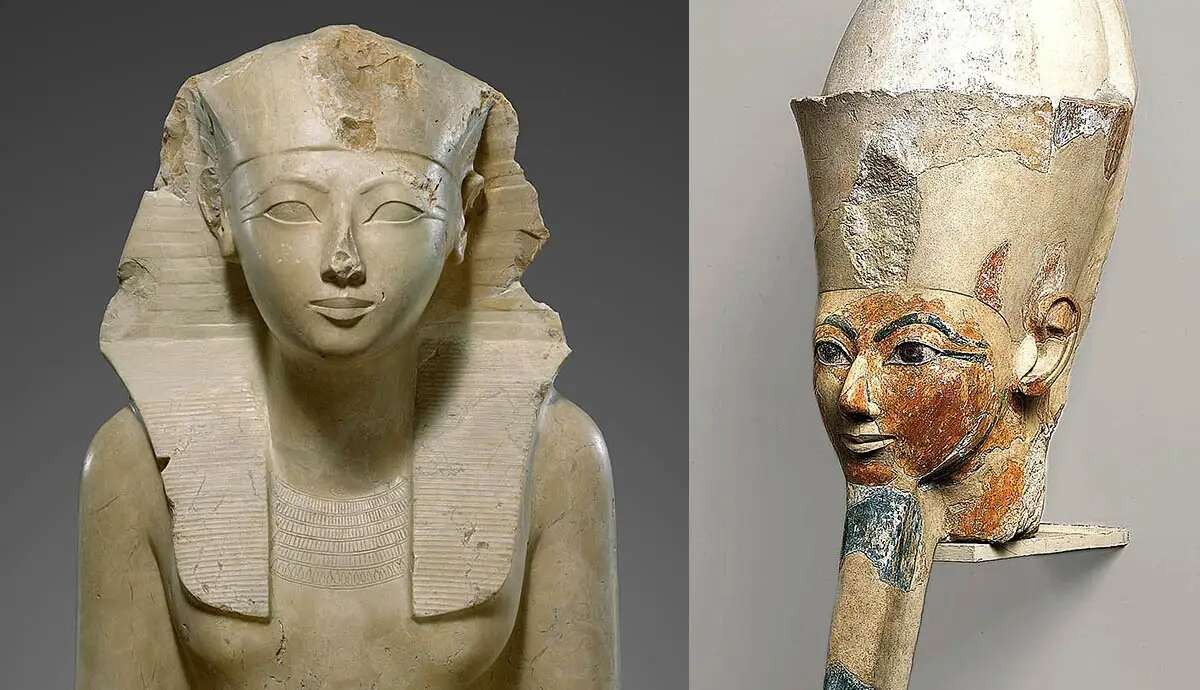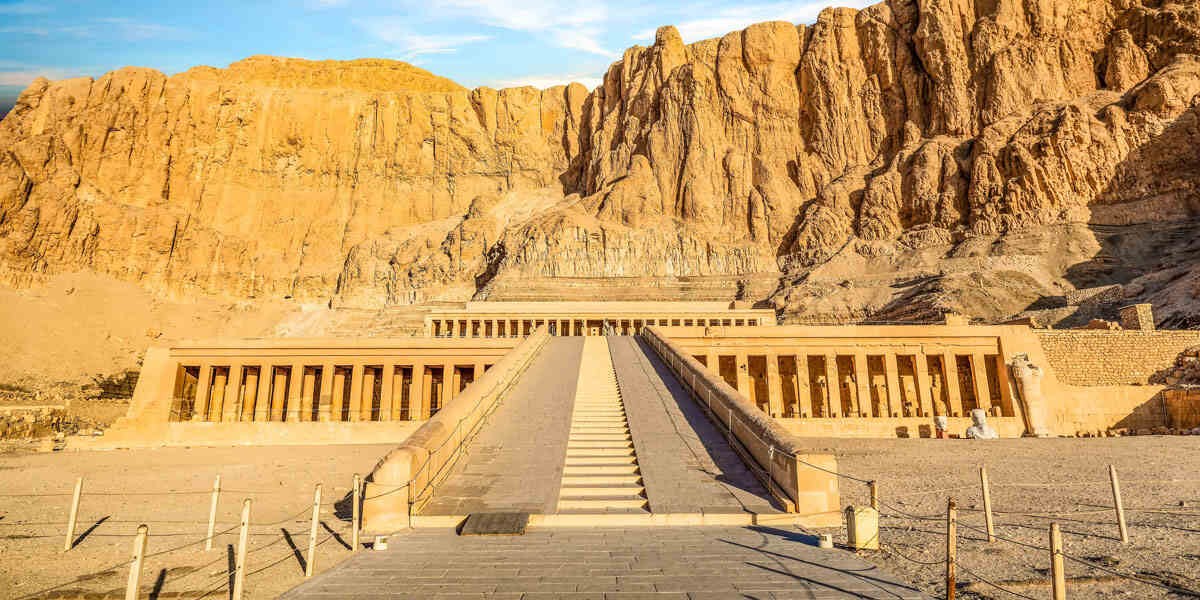Queen Hatshepsut
One of history's most well-known and contentious female monarchs was Queen Hatshepsut, who ruled during Egypt's 18th dynasty. She was the first woman to assume the role of pharaoh, and she was quite successful at it. We will provide you all the details and insider knowledge about Hatshepsut's life throughout your Egypt tours. Queen Hatshepsut presided over a number of noteworthy accomplishments, including the construction of some of Egypt's most stunning temples. She was also in charge of lengthy trading voyages that brought Egypt dignity and money. Queen Hatshepsut was a successful and competent leader, yet her legacy is not without dispute.
One of the most prosperous pharaohs in Ancient Egyptian history, Hatshepsut reigned Egypt for more than twenty years. She succeeded in keeping both a robust economy and an orderly rule. Furthermore highly effective in extending Egyptian territory were her military initiatives. She is famous for her numerous construction endeavours, which made an enduring impression on Ancient Egypt. You can reserve a day tour to Luxor to visit the Hatshepsut temple if you wish to view the queen Hatshepsut statue.
Why was Queen Hatshepsut a good leader?

Throughout the course of her more than two decades of dominance over Egypt, Queen Hatshepsut accomplished a great deal. Her personal tomb at Deir el-Bahri was one of the temples and monuments she oversaw being built. Egypt tours gate suggested an incredible Egypt Travel package to visit Hatshepsut's tomb.
She dispatched missions to distant locales like Punt and Nubia in an effort to bring back useful materials. Egypt grew economically and culturally under her rule.
The first female pharaoh of Egypt, Queen Hatshepsut ruled at a period of unparalleled prosperity. You can ensure that Hatshepsut was a capable leader by taking advantage of our offer for Egypt day tours. She dispatched missions to distant locales like Punt and Nubia in an effort to bring back useful materials.
Facts about the Tomb of Queen Hatshepsut
Death was not the end in ancient Egypt; rather, it was the start of a protracted and difficult journey. All of the deceased's earthly belongings were placed in magnificent tombs once they had been mummified or embalmed.
The removal of the internal organs, which were then preserved and put in canopic jars, was the first step in mummification. The body was then coated in natron, a salt that delayed decomposition by dehydrating the body. The natron was taken off after a few weeks, and the body was bandaged with linen. The clarity of all this material will increase throughout our Egypt trips with your Egyptologist.
The burial place of Queen Hatshepsut is one of the most noteworthy in all of Egypt. It is situated in the Valley of the Kings and comprises of three levels: an underground chamber, a shaft prompting the entombment chamber, and a progression of rooms and sections on the ground level.
The mummy of Queen Hatshepsut was found in her burial place by archeologists in 1907. She had been covered with all her formal attire, including her bogus facial hair and stylized staff. Her mummy is currently in plain view in the Egyptian Museum in Cairo.

Queen Hatshepsut achievements
In recent years, there has been a growing recognition of the accomplishments of Queen Hatshepsut. She was responsible for many impressive building projects, including the construction of a temple at Karnak. She also spearheaded a trading expedition to the land of Punt, which brought back valuable goods and established diplomatic relations with that country.
Recent scholarship has shed new light on Queen Hatshepsut and her reign. Her story is an inspiring example of a woman who achieved great things in a male-dominated society. As we learn more about her, she continues to fascinate and inspire us. Luxor and Aswan attractions have many ancient temples where you can see Hatshepsut and learn about its military history and works.
Hatshepsut In popular culture
One of the most well-known and controversial ancient Egyptian pharaohs, Queen Hatshepsut, have had many representations in popular culture over the years. In film and television, she has been played by actresses such as Joan Collins, Julie Christie, and Helen Mirren.
In literature, she has been a character in novels by authors such as Arthur Weigall and Barbara Mertz. And in video games, she is a playable character in the Assassin's Creed franchise. During our Cairo excursion, you can see a statue of Hatshepsut and know the story of this statue with an Egyptologist in an Egyptian museum.
Hatshepsut has often been portrayed as a power-hungry woman who was ruthless in her quest for power. However, more recent portrayals have sought to humanize her and show her as a complex figure who was struggling to find her place in a male-dominated world.
Regardless of how she is portrayed, Queen Hatshepsut continues to be one of the fascinating figures from ancient Egypt. A one in a lifetime chance to explore Egyptian civilization and pharaoh wonders through our Egypt Travel package.